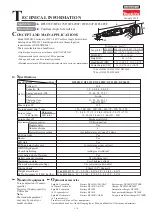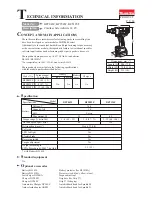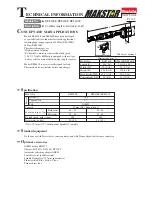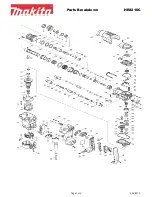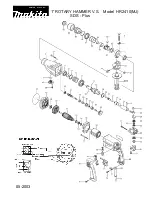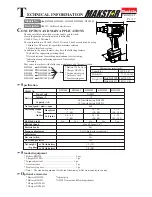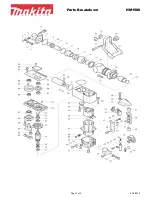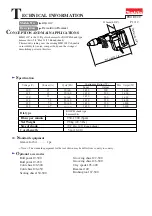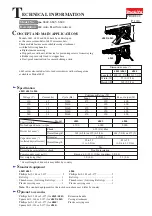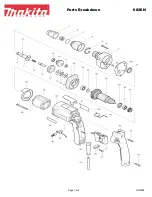
31
MAINTENANCE AND CALIBRATION
Model 1655A
If this instrument is severely overloaded at higher output
voltages, circuit breaker CB1 on the rear panel will trip. The unit
will stop operating and the POWER ON pilot light will go off.
Remove the overload and push the button on the circuit breaker to
reset. A severe overload at low output voltage will blow fuse F2 on
the rear panel. In this case, there will be no output but the pilot
light will stay on. If the soldering iron outlet is overloaded, internal
fuse F1 will blow. If so, the SOLDER TEMP pilot light will go off.
Fig. 15 shows the fuse locations. Replace fuse F1 only with a 1-
amp normal blow type 3AG. Replace fuse F2 only with a 4-amp
slow-blow type 3AG.
AUTO-TRANSFORMER BRUSH REPLACEMENT
To replace the brush, unplug the instrument, then gently lift the
brush from the brush track. Grasp the old brush assembly and snap
it out of position by pulling radially. Install the new brush assembly
by lifting the spring arm and snapping the new brush assembly into
position.
It is imperative that newly installed or re-installed brushes
be seated correctly on the brush track for proper operation of
the transformer. With the power off, insert a piece of garnet
paper (non-metallic) between the brush and brush track, rough
side toward the brush. A few swing of the brush over the
garnet paper will mate the brush contact face to the brush
track. Remove the garnet paper and blow away loose particles
before applying power.
CALIBRATION ADJUSTMENTS
This unit was carefully checked and calibrated at the factory
prior to shipment. Readjustment is recommended only if
repairs have been made in a circuit that affects calibration, or it
you have reason to believe the unit may be out of calibration.
Locations of the calibration adjustments are shown in Fig. 14
(Model 1653A) and 15 (Model 1655A).
Test Equipment Required
1.
Multimeter, ac voltage accuracy of 0.5% or better at
120 V, 60Hz, ac current accuracy of 1% or better at
500 microamps and 2 amps, 60Hz.
B+K Precision
Model 2831D or equivalent.
2.
60 ohm, 240 watt resistive power supply load. Must be
capable of dissipating 2 amps at 120 VAC. A variable
electronic load of sufficient power rating may be used,
or parallel light bulbs totaling 240 watts are suitable.
Summary of Contents for 1653A
Page 10: ...8 CONTROLS AND INDICATORS Figure 1 Front Panel Controls and Indicators Model 1655A ...
Page 11: ...9 CONTROLS AND INDICATORS Figure 2 Front Panel Controls and Indicators Model 1653A ...
Page 12: ...10 Figure 3 Rear Panel Controls and Indicators Model 1655A CONTROLS AND INDICATORS ...
Page 13: ...11 Figure 4 Rear Panel Controls and Indicators Model 1653A CONTROLS AND INDICATORS ...
Page 15: ...13 OPERATING INSTRUCTIONS PRECAUTIONS Figure 5 Observe Caution Above 130V ...
Page 17: ...15 OPERATING INSTRUCTIONS PRECAUTIONS Figure 6 Maximum Current Considerations ...
Page 28: ...26 Leakage Tester OPERATING INSTRUCTIONS Figure 12 Power Line Leakage Testing ...
Page 49: ...47 CONTROLES E INDICADORES Figura 1 Controles e indicadores frontales del modelo 1655A ...
Page 50: ...48 CONTROLES E INDICADORES Figura 2 Controles e indicadores frontales del modelo 1653A ...
Page 51: ...49 CONTROLES E INDICADORES Figura 3 Controles e indicadores traseros del modelo 1655A ...
Page 52: ...50 CONTROLES E INDICADORES Figura 4 Controles e indicadores del modelo 1653A ...
Page 58: ...56 INSTRUCCIONES DE OPERACIÓN Localizando averías Uso como transformador de aislamiento ...
































